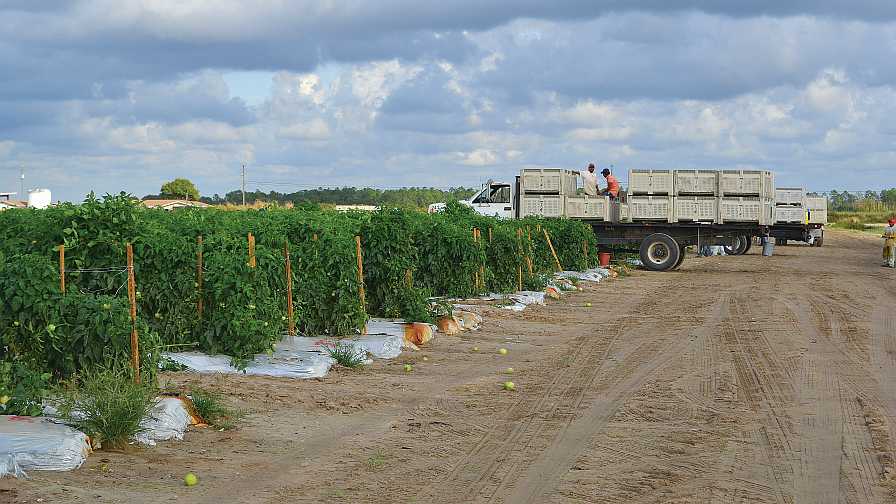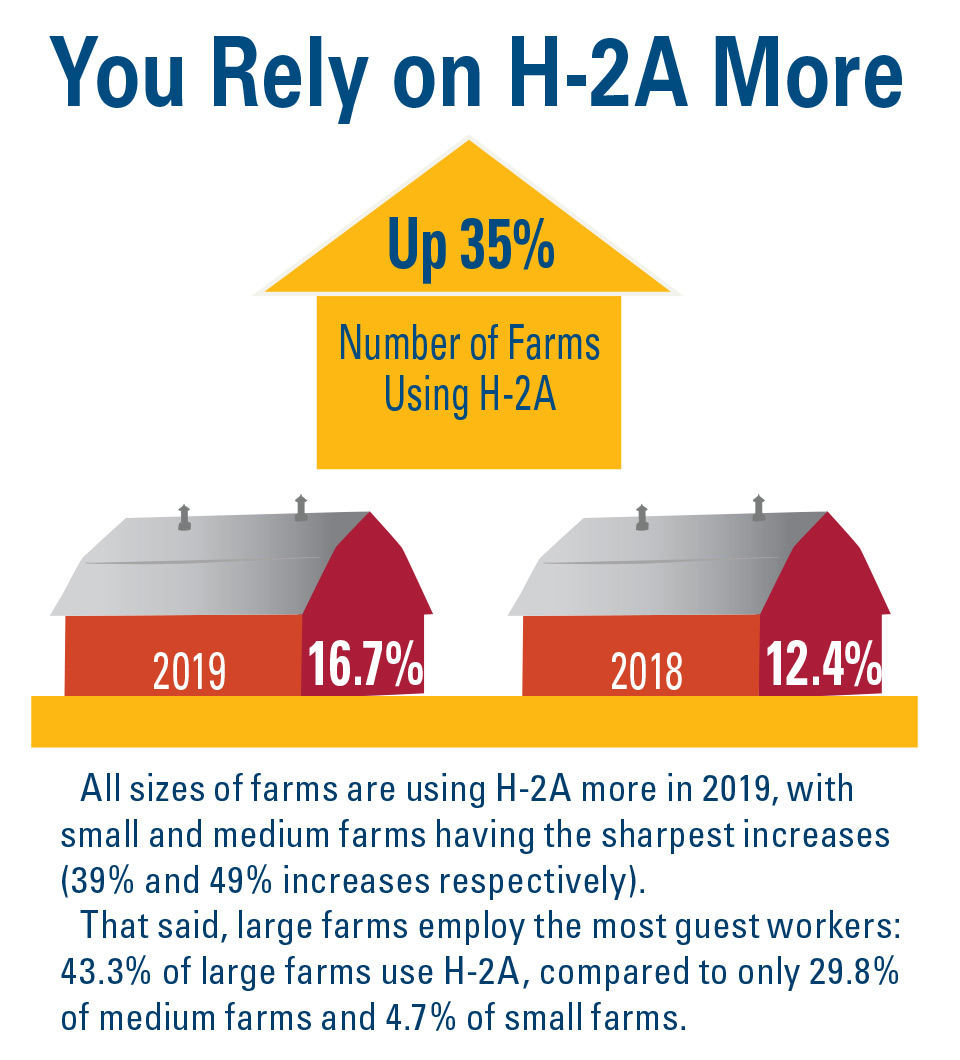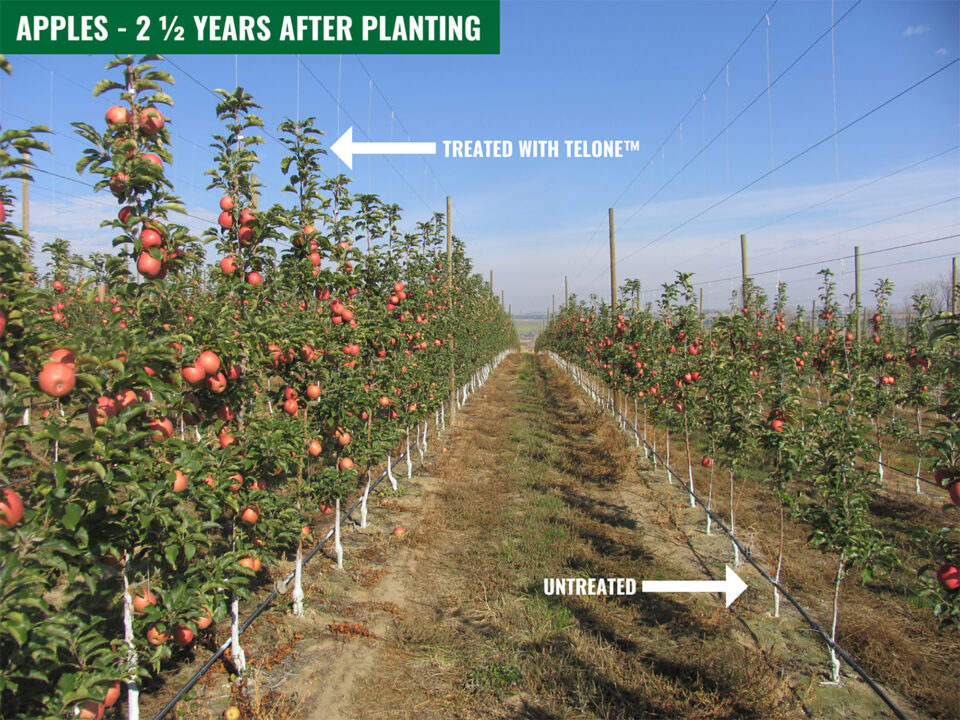More Farms Growing With H-2A Help

Work ethic and efficiency should be taken into account when trying to determine the number of H-2A workers needed on your farm. Photo by Frank Giles
For several years, Florida reigned as the nation’s top user of the H-2A visa program for sourcing labor. It has been a favorite of the state’s citrus growers for years with tomato, strawberry, blueberry, and other growers now tapping into the program.
With finding labor becoming more difficult, and the consequences of mandatory E-Verify in some states, the visa program has boomed across the country, displacing Florida from the top spot.
In fiscal year 2018, Georgia was the top H-2A user in the country with 32,364 certified positions. The state passed mandatory E-Verify in 2011, which meant the end of the traditional flow of migrant workers from Florida into Georgia. Thus, Georgia growers’ only reliable labor source became H-2A.
Other states are rapidly increasing their H-2A workforce, including Washington, North Carolina, and California. Kerry Scott, Program Manager for labor placement firm másLabor, says the program is desirable despite its regulatory red tape and costs.
“When you first start the H-2A process, it will seem daunting,” he says. “But virtually all growers who get a year under their belt tell me they wish they had started using the program 10 years ago. H-2A visas topped to 200,000 in 2017. That is double the number of visas in 2013, which tells you something about the growing popularity of the program.”
Scott says the process can be eased with the help of a firm like másLabor or through an immigration attorney who knows the ropes and how to manage the program more efficiently.
Due Diligence
Working in advance to anticipate your labor needs will be an important first step in preparing for the H-2A process. Scott likes to use a T-minus countdown for important milestones in securing visas.
“This whole process revolves around the date of need,” he says. “We need to assign a date when the grower anticipates he is going to need those workers on the farm. Then we work backward from there and attempt to file within T-75 days of that need.”
The H-2A statute notes applications for visas cannot be filed more than 75 days out of need and not less than 60 days. While the applications can still be filed within 60 days of need, growers can expect a delay of approximately two days for every day past T-60 for workers to arrive.
“In recent years, we have found the sweet spot for applications is between 75 and 65 days of need for arrival on the farm,” Scott says. “Despite what the statute says, we have found any applications much later than 65 days, the workers are probably going to arrive late on a day-by-day basis after
65 days.”
Because of this, growers need to know what their needs are going to be well before the T-75 day window starts. Scott recommends their customers know what their needs will be and begin the process 90 days in advance of needed arrival on the farm. He adds that his company offers a discount to growers who can begin the process 120 days out.
When trying to determine the number of H-2A workers needed on the farm, particularly for harvesting, Scott says their work ethic and efficiency should be taken into consideration.
“We have seen it proven in the orange groves of Florida and blueberry patches of Washington State that these H-2A workers are going to be much more productive than any workforce you have had up until now,” he says. “These guys are going to show up every day on time, motivated to work. They will want to work every hour you offer them and will ask for more. They are going to work hard and get the job done because they want to be invited back next year. You are better off bringing in fewer workers and offering them more hours than bringing in too many.”

Responses from American Vegetable Grower‘s 2019 State of the Vegetable Industry survey correspond with industry trends regarding H-2A labor usage.
Housing Hurdles
For first-time program users, providing housing for the H-2A workers can be one of the bigger challenges. There are checklists available that growers can use to vet and get structures into compliance. Scott advises that available beds equal visas. Housing will need to be ready for inspection within 45 days and not less than 30 days of the anticipated date of arrival of workers.
“We tell our clients housing is part of the program that really needs to be solved or well on the way toward solving before they do anything else,” Scott says. “It is not really a difficult standard to meet, but it has to be in order before any other parts of the process can work.”
When OSHA was given authority to regulate housing, the standard was enlisted military barracks of the time (circa 1986). It would be a structure with long rows of bunk beds and foot lockers with a kitchen on one end and bathroom on the other. Today, house trailers and old farmhouses can fit the bill. Just be mindful of the checklist, Scott says.
“There might be some things that seem silly, like the rule that says all doors and windows must have screens on them, even windows that don’t open,” he says. “And, it might take some babysitting. Some of these workers smoke and might poke a hole in the screen to air out the cigarette when it is too hot or cold to smoke outside. Inspection will reveal these faults, but typically the inspectors will sign off on structures with the instruction to fix any problems before the next visit.”
Expanding the Program
Scott says there are ways to improve the program in the future, both legislatively and from a regulatory standpoint. One of the biggest needs is making H-2A available to other sectors that need it desperately, like the dairy industry. He said growers should not worry that opening the program up would mean it would run out of workers.
“There is not a cap on H-2A visas,” he says. “While we source most of these workers from Mexico, the program can recruit labor from 80 countries.”










